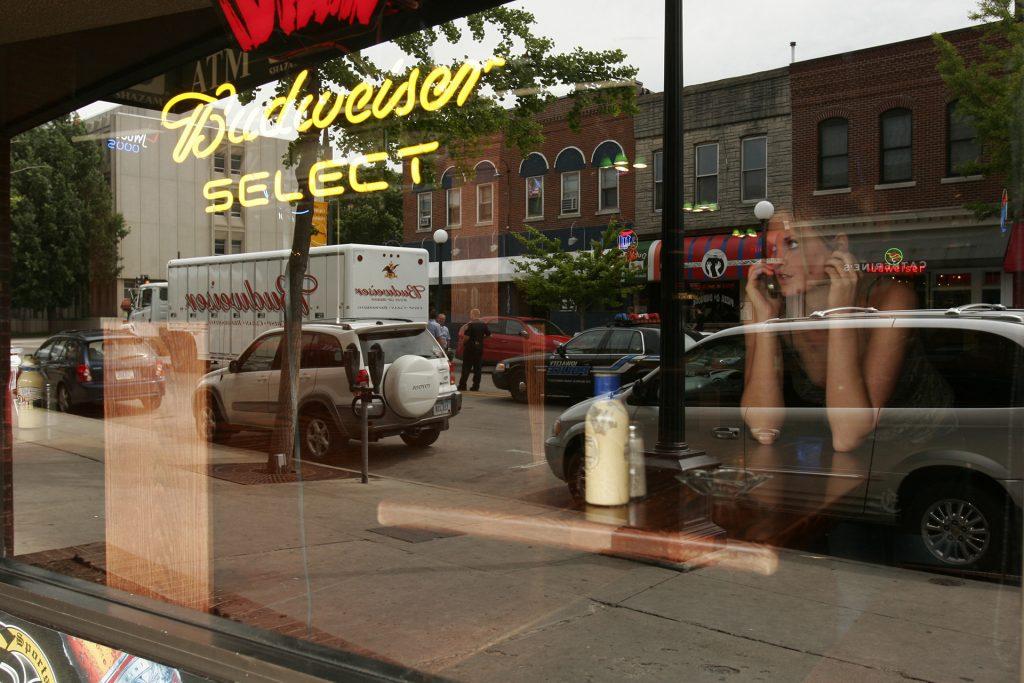Iowa City doesn’t live up to its new ‘drunkest city in Iowa’ title, statistics appear to demonstrate.
By Kayli Reese
In a recently published report, the Centers for Disease Control & Prevention and 24/7 Wall Street found Iowa City to be the “drunkest city in Iowa,” but Iowa City experts report that drinking-related incidents are down.
Iowa City police Sgt. Scott Gaarde said alcohol-related arrests have dropped dramatically for the city following the institution of the 21-ordinance seven years ago, which forbids those 18 to 20 years of age from being in a bar after 10 p.m.
In 2007, there were 1,106 public-intoxication arrests. By 2010, the year the 21-ordinance began, the number dropped to 887. From January to October this year, there have been 467 public-intoxication arrests.
In 2007, underage public-intoxication arrests totaled 385. In 2010, the number dropped to 285, and in 2017, the number is 123 such arrests so far.
Alcohol-related accidents have also decreased in Iowa City, decreasing from 54 accidents in 2007 to 40 in 2017 resulting in property damage.
RELATED: SHOUT has success in increasing downtown safety
Gaarde said the community has been working together to promote safe habits.
“The University of Iowa and the city of Iowa City continue to partner in a variety of means such as education, city ordinance changes, and other programs, such as SHOUT, Know the Law presentations, and joint-enforcement programs,” Gaarde said.
Tanya Villhauer, UI Student Life’s associate director for harm reduction and strategic initiatives, said the university is committed to students’ well-being, regardless of what ranking or title the city receives.
“The University of Iowa has made a commitment to lowering undergraduate high-risk drinking rates over the past eight years,” she said. “And [we’ve] made great progress.”
In the latest National College Health Assessment survey, Villhauer said, the frequency of underage drinking and high-risk student drinking is at its lowest point in 25 years, with high-risk drinking habits going from 70.3 percent in 2009 to 50.5 percent in 2017.
More UI students are deciding not to drink or to wait until they are older to drink than before, she said, with 13.3 percent doing so in 1991 and 27.5 percent in 2017.
RELATED: Survey reveals decline in high-risk alcohol use among UI students
While the UI is pleased with the progress, Villhauer said, more work needs to be done, and the UI has used its Alcohol Harm Reduction plan to make it happen.
Large alcohol-consumption habits tend to have numerous factors behind them, she said, such as the Midwest and Northeast having higher drinking rates than Southern states. Many cities found to have excessive drinking rates, she said, have higher median incomes, more bachelor degrees, and healthier populations, though excessive drinking is not a healthy habit.
Another factor to consider when seeing if a city has high drinking habits, she said, is the outlet density of bars and liquor stores.
UI sophomore Madison Osborn said she believes the title of “drunkest city in Iowa” being hung on Iowa City is not surprising, even with less drinking occurring.
“The downtown area is mixed with the campus,” she said. “When you have a bunch of college kids surrounded by bars, lots of drinking is going to happen.”



